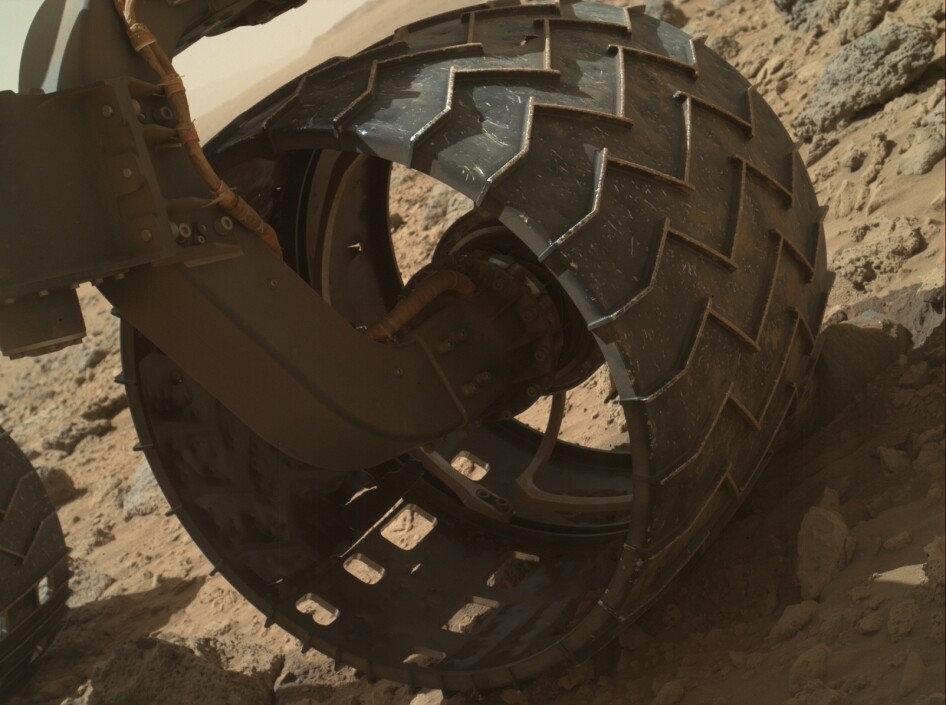Curiosity Rover has cleared a sand dune that has barred the mission's progress since January 30th. The dune, roughly three feet (one meter) in height, stood between two scarps. It effectively blocked the way forward to Dingo Gap, the Rover's next immediate destination before proceeding to the drill site designated KMS-9.
Despite the fact that the route west through Dingo Gap is by far the shortest route to KMS-9, with the distance standing at 800 meters (2,624 ft) as the crow flies, the team was compelled to find a safer path for the rover to traverse. Whilst a three-foot dune sounds like a relatively minor impediment for a rover that cost US$2.5 billion to construct, there were significant concerns raised by the team regarding damage to Curiosity's aluminum wheels.
Jim Erickson, project manager for the NASA Mars Science Laboratory Project, stated in December, 2013 that "Dents and holes were anticipated, but the amount of wear appears to have accelerated in the past month or so. It appears to be correlated with driving over rougher terrain.”

The team is currently investigating new ways to minimize the risk to the wheels. Current suggestions from the Jet Propulsion Lab include driving the rover backwards and using four-wheel drive instead of the usual six-wheel drive.
Regardless, having weighed options by observing both images sent back from Curiosity peeking over the lip of the dune, and from overhead shots of possible alternative routes from NASA's Mars Reconnaissance Orbiter, the team decided that to climb the dune presented the smallest threat. On Feb. 9, Curiosity successfully traversed the dune.
The time Curiosity sat idling was not entirely wasted, however. On Jan. 31 as the Rover waited for the team to decide which route it would take, it turned its camera to take this snapshot of the Earth, which at the time was 99 million miles (160 million km) away.

As of Feb. 11, Curiosity has covered an additional 135 feet (41.1 m) on its way through Dingo Gap to KMS-9, putting its total odometer reading at 3.09 miles (4.97 km) since its landing in August, 2012. Upon reaching KMS-9, the rover will drill for further rock samples in its ongoing attempt to assess ancient habitable environments and major changes in Martian environmental conditions.
Source: NASA






